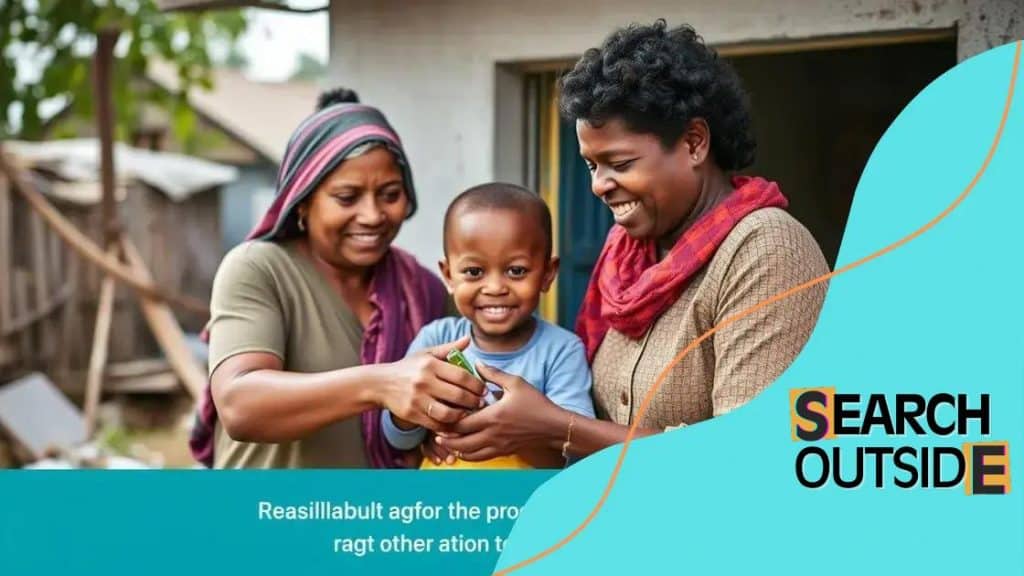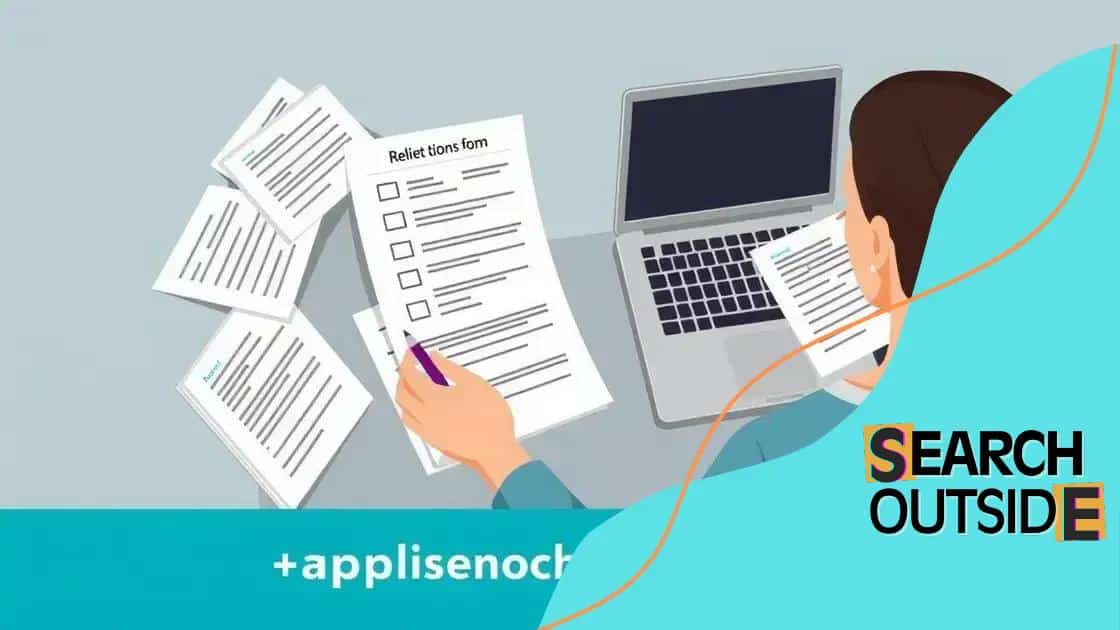How to access emergency relief programs after natural disasters

To access emergency relief programs after natural disasters, gather required documents, understand eligibility criteria, and apply promptly through local organizations and online resources for timely assistance.
How to access emergency relief programs after natural disasters is a crucial topic for anyone affected by recent events. If you’ve ever wondered what steps to take when disaster strikes, this article aims to guide you through the process.
Understanding emergency relief programs
Understanding emergency relief programs is essential for recovering after a natural disaster. These programs are designed to provide timely assistance to those who need help the most. They can include monetary assistance, housing support, and food resources.
There are different types of relief programs. Some are government-funded, while others come from nonprofit organizations or local community efforts. Each program has specific guidelines on who can receive help and how to access it.
Types of Emergency Relief Programs
Emergency relief programs can vary widely. Here are some common types:
- Federal Assistance: Programs like FEMA provide support for individuals and families.
- State Programs: Each state may have unique resources based on its needs and resources.
- Nonprofit Organizations: Groups like the Red Cross offer immediate relief during disasters.
- Local Community Efforts: Neighborhood organizations often help with grassroots support.
Each of these programs plays a critical role in recovery. To access assistance, applicants typically need to provide proof of their situation and show how the disaster has impacted them. Knowing what types of support are available can make a significant difference in the recovery process.
The application process can vary between programs. However, most will require you to fill out an application and often include documentation, such as proof of loss or identification. Make sure to prepare necessary documents in advance to avoid delays.
Eligibility Requirements
Each program has its own eligibility criteria. Factors like income, residence, and the specific disaster may affect your chances of receiving help. Read the guidelines carefully to ensure you meet the requirements.
Understanding the criteria allows you to apply more effectively. Keep in mind that applying for assistance may also be time-sensitive, especially after a disaster occurs.
Eligibility criteria for assistance
Understanding the eligibility criteria for assistance is crucial when seeking help after a disaster. Each relief program has specific requirements that applicants must meet to qualify for support.
Generally, these criteria can include factors like income levels, residency, and the type of disaster experienced. Knowing these details can help streamline your application process.
Common Eligibility Requirements
Here are some typical eligibility criteria:
- Residency: Applicants often need to prove that they reside in the affected area declared a disaster zone.
- Income Level: Many programs assess your income to determine if you meet the low-income threshold.
- Documented Loss: You may need to provide evidence of damage or loss caused by the disaster.
- Dependent Status: Some programs require information about dependents in your household.
Applying for help typically involves submitting documents that verify your eligibility. It’s essential to gather necessary paperwork in advance, such as bills, identification, and photos of the damage. These documents will help strengthen your application.
Eligibility can change based on individual circumstances and the overall demand for assistance. Each program aims to help those who need it most, so always check the specific guidelines for each resource available to you.
In addition, local organizations may have their own criteria, which can differ from federal or state programs. Researching thoroughly can reveal more opportunities for support.
Application process for relief programs

The application process for relief programs is a crucial step in obtaining the help you need after a disaster. Understanding how to navigate this process can significantly increase your chances of receiving assistance.
Typically, the application process begins with gathering necessary documents. These may include proof of identity, financial information, and details about the property affected by the disaster. It’s important to keep these documents organized, as you may need to submit them along with your application.
Steps to Apply for Assistance
Here are the general steps you should follow when applying:
- Research Programs: Start by identifying which programs you are eligible for. This can include federal, state, and local resources.
- Complete the Application: Fill out the application form completely. Make sure to provide accurate information and avoid leaving any sections blank.
- Submit Documentation: Include all required documents that support your claim. This might include photos of damage or estimates for repairs.
- Follow Up: After submitting, check the status of your application regularly. Many programs provide tracking options.
Once your application is submitted, it may take time for the review process to complete. During this waiting period, stay in touch with the program administrators if you have questions or need further information.
Keep in mind that some applications can be completed online, while others may require in-person visits or phone calls for further assistance. Be sure to choose the method that works best for you based on your situation.
It’s also helpful to apply as soon as possible, as many relief programs have deadlines. The sooner you begin the process, the better your chances of receiving timely support.
Documents needed for application
Gathering the right documents needed for application is a crucial step in the relief process. Without the necessary paperwork, your application may face delays or even denial.
The exact documents required can vary by program, but there are some common items you should prepare. Having everything organized will make the application process smoother and simpler for you.
Common Documents Required
Here are some typical documents you may need:
- Identification: A government-issued ID such as a driver’s license or passport is usually required.
- Proof of Residence: This can include a utility bill, mortgage statement, or lease agreement that shows your address.
- Evidence of Damage: Photos or videos documenting the damage from the disaster can help support your application.
- Financial Information: This may involve recent bank statements, pay stubs, or tax returns to verify your income.
It’s essential to check the specific requirements for each relief program to ensure you have all necessary documents. Some applications can be submitted online, while others may require physical copies to be mailed or presented in person.
As you collect documents, keep them in a safe and easily accessible place. Having everything ready will help you respond quickly if additional information is requested during the review process. Remember, detailed and organized documentation increases your chances of receiving assistance.
Additionally, reaching out to local organizations can provide insights into any specific documentation needs they might have, ensuring you won’t miss a critical piece of information.
Additional resources for support
Finding additional resources for support after a disaster can be crucial for recovery. Many organizations and agencies offer various forms of assistance to help individuals and families get back on their feet.
These resources can range from financial help to emotional support and rehabilitation services. Understanding where to look and who to contact is essential for maximizing the assistance available to you.
Types of Additional Resources
Here are some common resources that might be available:
- Local Nonprofit Organizations: Many local nonprofits provide relief funds, food, and clothing to those in need.
- Crisis Counseling Services: Organizations may offer counseling to help individuals cope with the emotional toll of a disaster.
- Community Centers: Local community centers often serve as hubs for relief information and resources.
- Faith-Based Groups: Churches and other faith organizations frequently mobilize to provide assistance and support.
In addition to these resources, online platforms can connect you with further assistance. Websites dedicated to disaster relief often provide information about funding, grants, and local services available in your area.
State and federal agencies can also provide information about longer-term recovery options, such as housing assistance and employment aid. It’s beneficial to stay in contact with these organizations as you recover.
Don’t hesitate to reach out to family, friends, or community members who may have valuable information about available resources. A strong support network can provide not just information, but also emotional support during challenging times.
In conclusion, knowing how to access emergency relief programs after a disaster is vital for recovery. From understanding eligibility criteria to gathering the right documents, each step plays an important role in the process. Remember that various resources are available to support you during difficult times. By staying informed and organized, you can effectively navigate the application process and receive the assistance you need. Don’t hesitate to reach out to local organizations and community resources. They can provide valuable help and information. Your recovery is possible, and support is out there for you.
FAQ – Frequently Asked Questions About Emergency Relief Programs
What types of assistance can I expect from emergency relief programs?
Emergency relief programs typically offer financial aid, housing support, food assistance, and mental health services.
How do I know if I am eligible for assistance?
Eligibility varies by program, but it usually includes residency in an affected area, proof of income, and documentation of damage.
What documents do I need to apply for relief?
You will generally need identification, proof of residence, evidence of damage, and financial information to support your application.
How can I find additional resources for support?
Look for local nonprofits, community centers, and government agencies that provide assistance and guidance during recovery.





